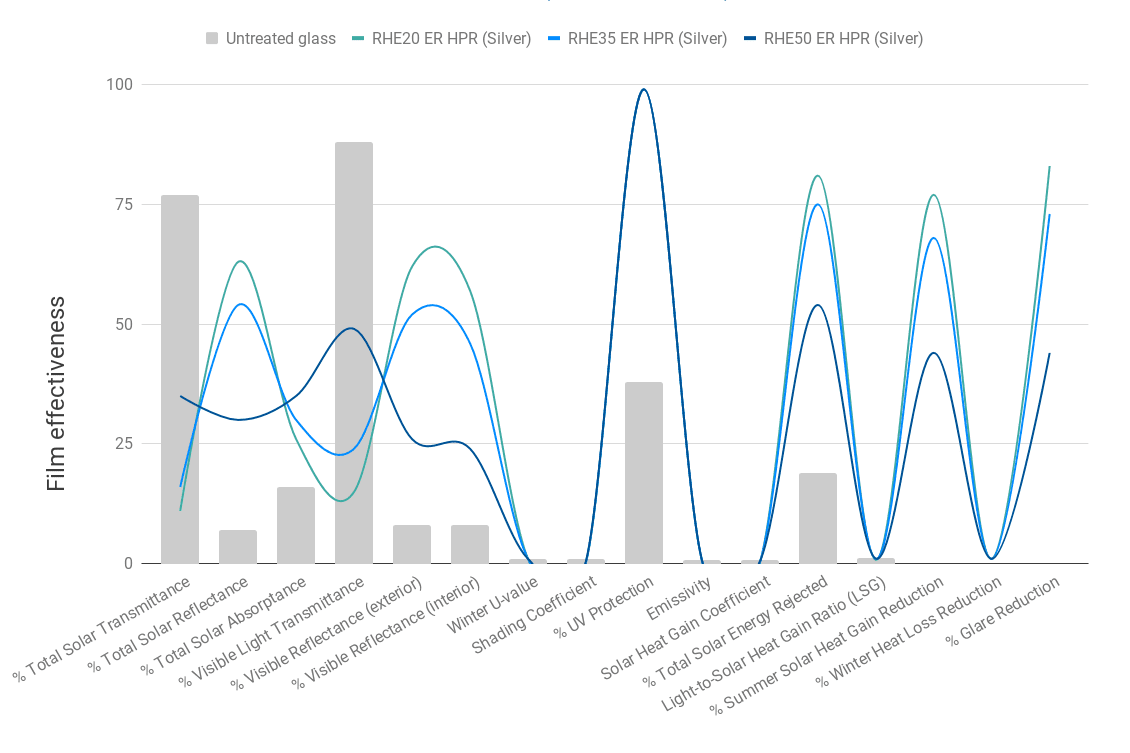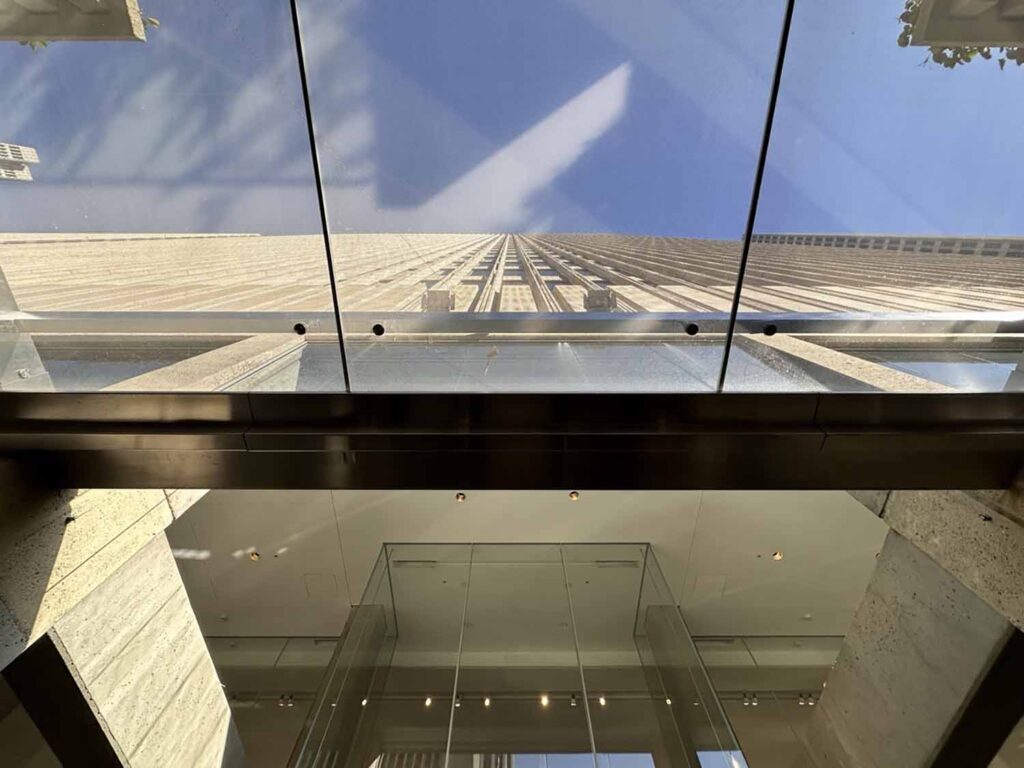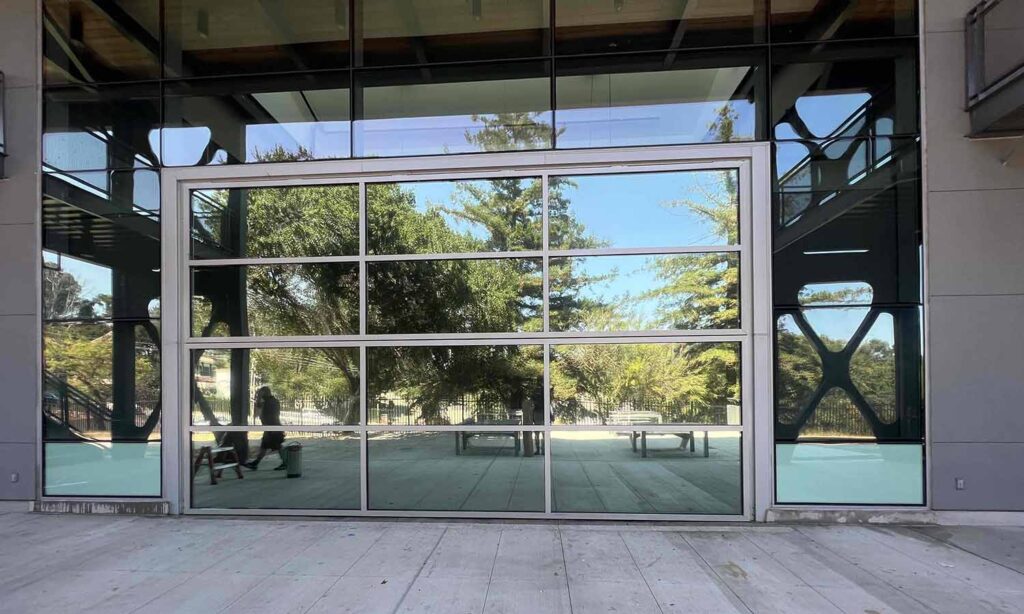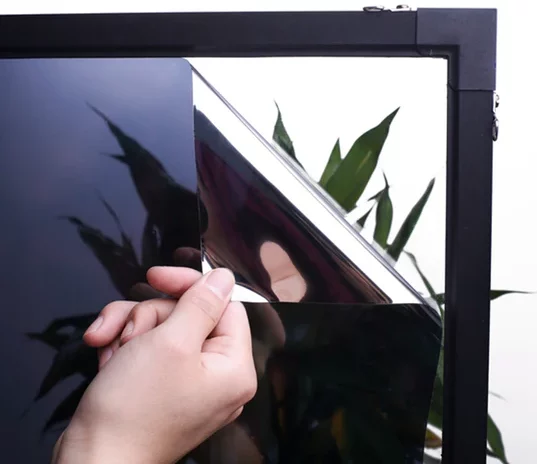Windows are a defining feature in both homes and commercial buildings. They provide light, visibility, and a sense of openness. However, large windows can also be a source of discomfort during warmer months, allowing heat and UV radiation to flood in, raising indoor temperatures and increasing energy bills. If you’re searching for a solution that addresses heat, glare, and privacy without sacrificing your view, reflective window film may be exactly what you need.
Many property managers, business owners, and homeowners ask the same question: Does reflective window film really block heat? The answer is yes—reflective film for windows is one of the most effective types of heat blocking window film available.
What Is Reflective Window Film?
Reflective window film, sometimes called mirror tint or one-way window film, is a special type of glass tint that includes a metallic layer designed to reflect sunlight. From the outside, this film gives windows a shiny, mirror-like appearance, offering daytime privacy. From inside, you can still see out clearly, but with the added benefit of cooler temperatures and reduced glare. Whether you’re looking to enhance privacy in your office building or reduce heat in your home, reflective tint provides a dual benefit.
How Reflective Film Helps Control Heat
When sunlight hits untreated glass, a large percentage of solar energy—including heat and UV rays—passes directly into your space. Reflective window film acts as a window blocker, reflecting much of that solar energy back outside. This results in lower indoor temperatures and decreased demand on air conditioning systems.
High-quality window reflective film can block up to 82% of solar energy, significantly outperforming untreated glass. This means your indoor environment stays cooler and more comfortable, even during peak summer heat. Additionally, reflective films reduce glare by up to 93%, protect interiors from sun damage, and block more than 99% of harmful UV rays. This makes reflective films a smart investment for energy efficiency and asset protection.
Reflective Window Film vs. Solar Window Film
Though often mentioned together, reflective window film and solar window film are not the same. Solar film is designed primarily to block heat and UV radiation, often with a subtle tint that allows in more light while offering some glare reduction. It is a good option if you’re not concerned with privacy and prefer a more natural window appearance.
In contrast, reflective window film is ideal when you want both heat control and privacy. It offers the highest levels of heat rejection and glare reduction but has a more noticeable appearance due to its reflective exterior finish. Many businesses and commercial buildings choose reflective films for both aesthetic uniformity and energy-saving benefits.
Types of Reflective Window Film
There are several styles of reflective film for windows, each offering a unique balance of light transmission, privacy, and performance. One of the most popular options is one-way mirror film, often used in office buildings and storefronts. This type of film is highly reflective on the outside, reducing heat and enhancing privacy during the day. Despite its strong solar control properties, it still allows excellent visibility from the inside looking out.
Another common option is silver reflective film, which comes in varying levels of light transmission. For example, a darker film like 151035 allows less light in, provides greater privacy, and blocks more heat. Lighter versions such as 151036 let in more natural light but offer slightly less heat rejection.
For those who want the benefits of reflective tint but prefer a softer indoor appearance, dual-reflective window film may be the right choice. This type of window tiny combines a reflective outer layer with a more neutral interior-facing layer, making it less mirror-like from the inside. It’s a popular solution for residential properties and mixed-use buildings because it maintains privacy and heat control without overly altering the view from indoors.
Performance Benefits of Reflective Tint
Untreated glass can allow over 75% of solar energy to enter your building, resulting in hot spots, higher cooling bills, and UV damage. In contrast, applying heat control window film significantly reduces the amount of solar radiation that enters through your windows.
Reflective window films block up to 82% of total solar energy and over 99% of UV light. This not only keeps your indoor environment cooler, but also reduces glare, making it easier to work or relax without harsh sunlight. The films also improve privacy during the day by creating a one-way mirror effect. At night, however, when indoor lighting is brighter than outside, the privacy effect is reversed, which is something to consider when choosing the right film for your needs.

Simply put, untreated glass provides minimal privacy and hardly blocks sunlight or harmful UV rays—over 75% of solar energy passes right through. In contrast, our reflective window films block up to 99% of UV rays and reduce 50% or more of heat, light, and glare.
Where Reflective Window Film Works Best
Reflective window film is widely used in both commercial and residential settings. In office buildings, reflective films provide uniformity, enhance exterior aesthetics, and contribute to LEED certification by improving energy performance. Many property managers install these films on large glass curtain walls to reduce heat load and increase tenant comfort.
In homes, window film for heat is often used in sunrooms, bedrooms, and living areas with large glass surfaces that face the sun. While homeowners may have aesthetic concerns about the mirrored exterior, dual-reflective film offers a great compromise between performance and subtlety. For those who prefer a completely non-reflective look, ceramic window films are another excellent solution.
Reflective films also work well for storefronts, warehouses, schools, and healthcare facilities—anywhere that privacy, energy efficiency, and glare reduction are a priority.
Choosing the Right Window Film for Heat Control
When selecting the best heat blocking window film for your space, consider the following:
If your top priority is maximum heat rejection and privacy, go with a high-reflectivity window film.
If you need a balance between visibility and comfort, dual-reflective film is a better fit.
If appearance is more important than privacy and you still want some solar protection, consider solar window film.
For minimal reflectivity and a clear view while still blocking heat, ceramic tint may be your best option.
It’s also important to note that reflective films not only offer energy savings but also protect furnishings, flooring, and artwork from UV-related fading.
At Fancyfix, we provide high-performance reflective window film products for both homes and businesses. Whether you’re a homeowner looking for more privacy or a property manager seeking to reduce heat in a commercial space, our window reflective film delivers effective heat control and glare reduction across all types of glass.
If you’re concerned about the mirror-like exterior of reflective film, consider a dual-reflective window film, which provides strong solar heat control with a softer, more natural look. And if you prefer no reflection at all, a ceramic window tint is another great option.
No matter your needs, Fancyfix makes it easy to upgrade your windows with high-quality reflective film for windows—designed for privacy, energy efficiency, and comfort.
So, does reflective window film really help block heat? Absolutely. With the ability to reject a significant portion of solar energy, reduce glare, protect your interiors, and offer daytime privacy, reflective film for windows is one of the most effective upgrades you can make to your building’s energy efficiency.
If you’re still deciding between reflective tint, solar window film, or other window tiny solutions, our team of experts is here to help. We’ll guide you through performance specs, aesthetic options, and ROI calculations so you can make the best decision for your home or commercial property.





